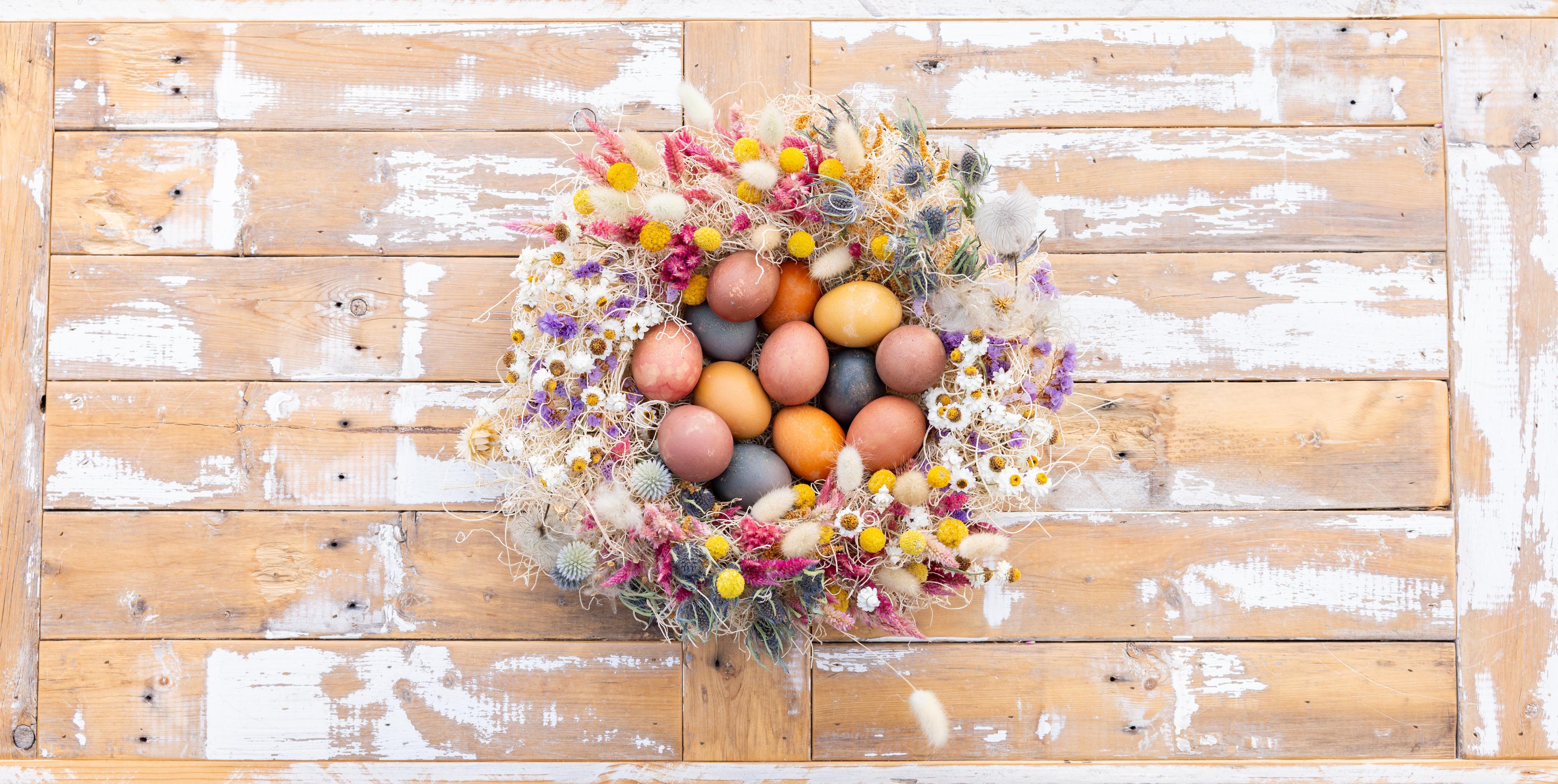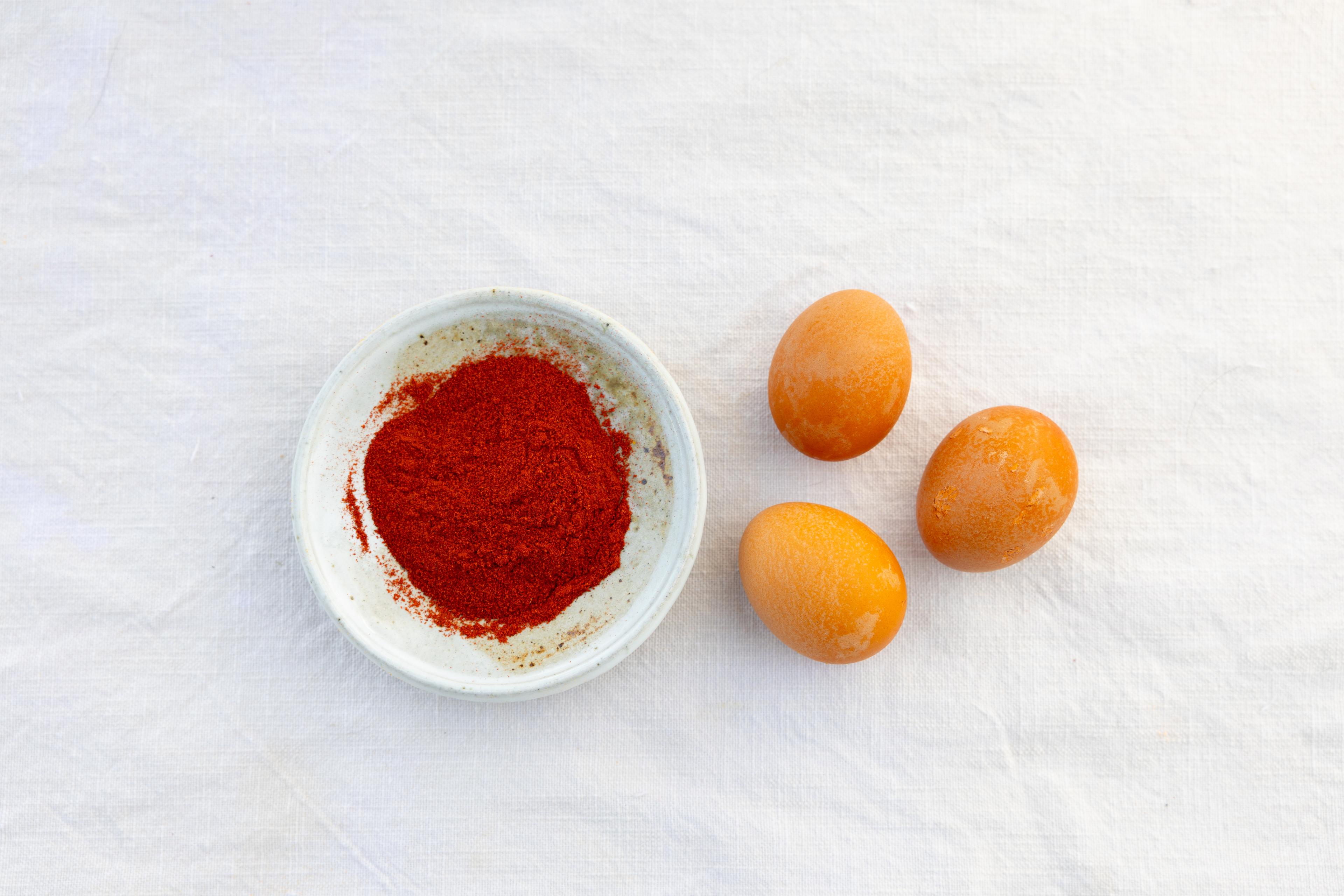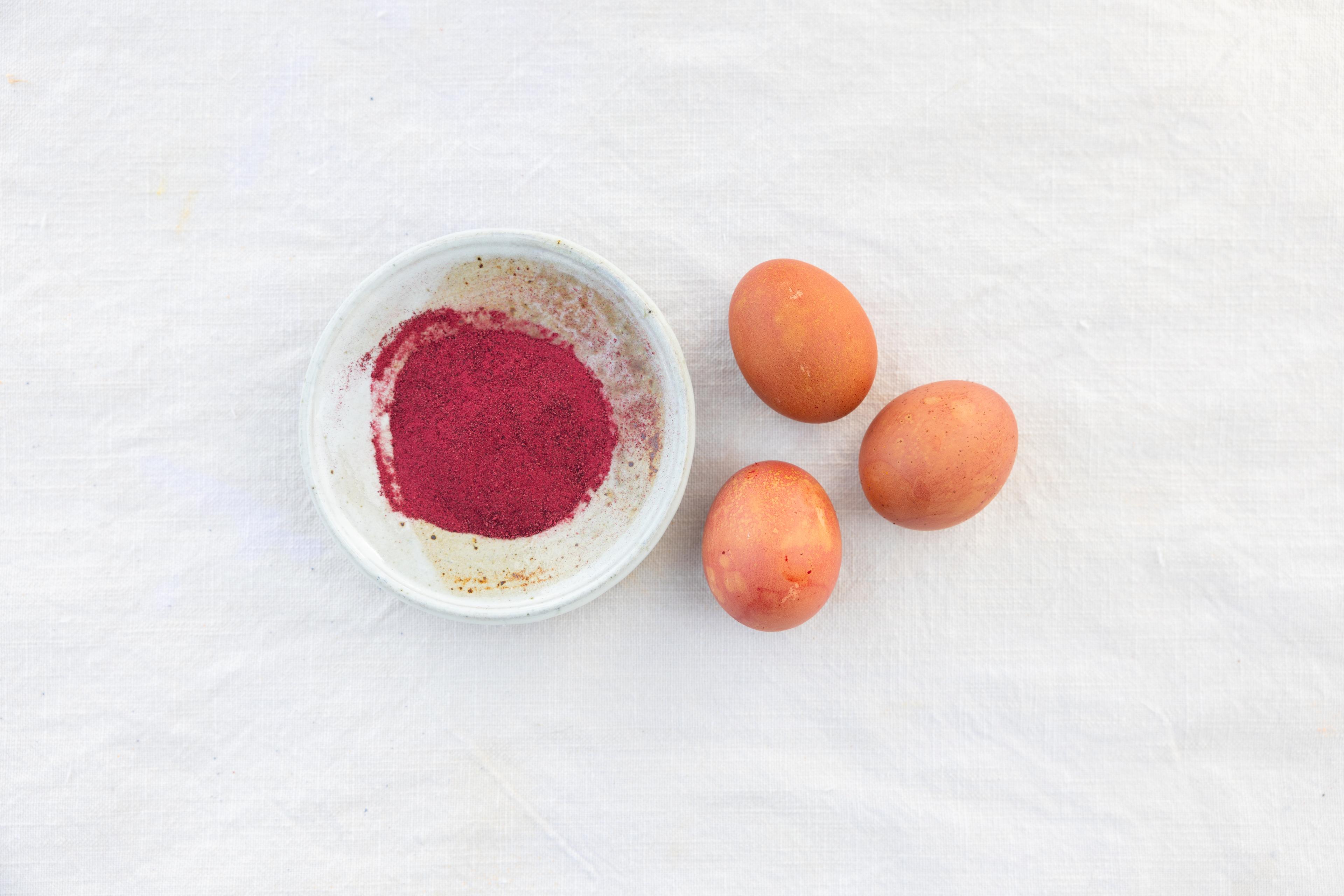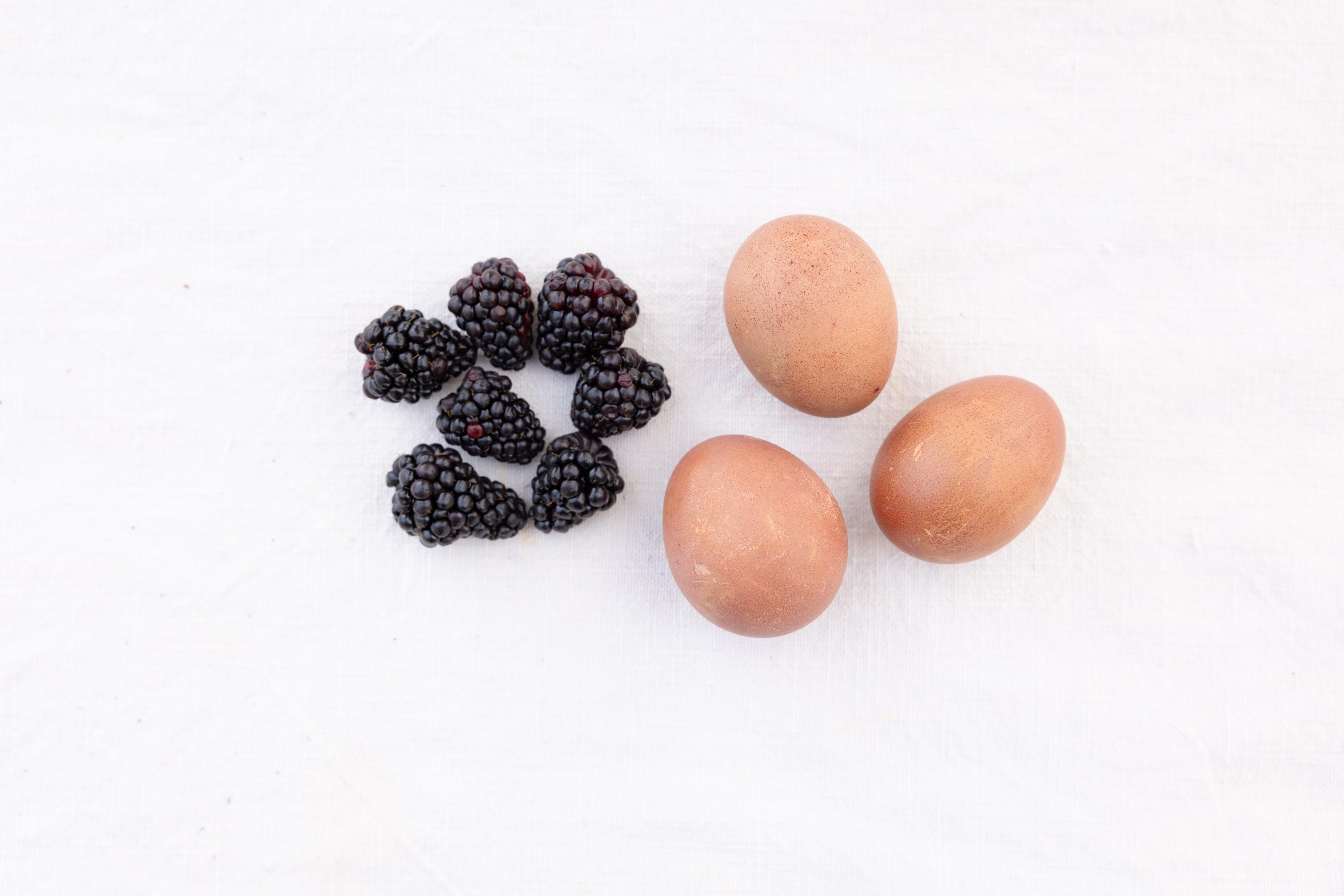
Food
Simple Steps to Dye Easter Eggs With Natural Ingredients
Yes, you can dye brown eggs! Natural dyes work beautifully with organic brown eggs, creating lovely, muted colors. For example, try natural dye from blackberries to create purple eggs. Fruits and veggie dyes provide subtle colors. If you'd like variety and want the color to pop a little more, try dying eggs using natural powders.
Let's look at how to dye Easter eggs with natural ingredients. First, learn how to prepare the eggs. Then we will share instructions to dye eggs using natural powders. After, you will find instructions using blackberries. Of course, Organic Valley eggs are lovely as they are and make a pleasing arrangement in their natural state.
Instructions to Create Charming Easter Eggs:
Prepare the Eggs
Be sure to wash your hands (and any small hands involved) before handling eggs.
There are two options for preparing eggs for dying:
Hard-Boiling: Boil the eggs, remove from hot water and cool slightly.
Boiled eggs are sturdier for little hands, but they will go bad if left out on display. Always refrigerate hard-boiled eggs after coloring them and eat within five days. The U.S. Department of Agriculture advises discarding cooked eggs that have been at room temperature for more than 2 hours.
Shells-Only: Alternatively, if you plan to put the eggs out on display, use a fork or skewer to poke small holes in both ends of the egg and gently blow the egg out of the shell into a bowl. (Save to scramble up later!) Rinse the shells very well and allow to dry. Rub shells with white vinegar to help the shell take up the dye.
Shells-only is a good option if you plan to display your creations. They're very fragile, though, so this method is best done with older children who will be less likely to crush them.
How to Dye Eggs With Powder Mixes

Blue: Butterfly Pea Flower Powder
Combine 2 cups of water and 2 tablespoons powder. Heat on stove until powder is dissolved, 1-2 minutes. Add to jar and let come to room temperature. Once room temperature, add eggs to a white vinegar bath for 1 minute, remove eggs and add to the dye for 5-7 minutes. The longer they sit the more color they have.

Yellow: Turmeric Powder
Combine 2 cups water and 2 tablespoons turmeric powder. Heat on stove until powder is dissolved, 1-2 minutes. Add to jar, and let come to room temperature. This dye works well for lighter brown eggs. Once room temperature, add eggs to a white vinegar bath for 1 minute, remove eggs and add to the dye for 7-10 minutes. The longer they sit the more color they have.

Orange: Smoked Spanish Paprika
Combine 2 cups water and 2 tablespoons powder. Heat on stove until powder is dissolved, 1-2 minutes. Add to jar and let come to room temperature. Once room temperature add eggs to a white vinegar bath for 1 minute, remove eggs and add to the dye for 7-8 minutes. The longer they sit the more color they have.

Red: Beet Root Powder
Combine 2 cups water and 2 tablespoons beet root powder. Heat on stove until powder is dissolved, 1-2 minutes. Add to jar and let come to room temperature. Once room temperature add eggs to a white vinegar bath for 1 minute, remove eggs and add to the dye for 5-7 minutes. The longer they sit the more color they have. Note: We also tried fresh beet root on brown eggs, but the color was negligible.

Purple: Blackberries
Combine 1 cup water and 12 ounces of blackberries. Bring to a boil and let boil for 5 minutes. While boiling, carefully smash the berries with a potato masher. Strain into jar and let come to room temperature. Once at room temperature add eggs to a white vinegar bath for 1 minute, remove eggs and add to the dye for 7-10 minutes. The longer they sit the more color they have.

Dyed eggs are eye pleasing in a basket or experiment with an arrangement of dried wildflowers.
Experiment and Finishing Touches
For a finishing touch take a very small amount of olive oil and buff it onto the egg after the color has dried. This will make the egg shiny and make the colors deeper and richer.
You can also experiment with colorful herbal teas, black tea, coffee, grape juice, spinach and more.
Dyed eggs are eye-pleasing in a plain basket or experiment with an arrangement of dried wildflowers.
Get Fancy!
Step up your egg-coloring game by making patterns on the eggs! Draw pictures or write messages with a wax crayon (we recommend white or tan/brown), or apply masking or electrical tape before adding the eggs to the bowls. Then gently remove the tape when eggs are dry.
Stay Clean(ish)
These egg dyes will stain clothing, carpet and skin. We recommend wearing old clothes and lining your project area with newspapers or old cloths.
Keep your fingers stain-free by using tongs to fish the eggs out of the jars. If using shells only, you can pick the eggs up using two toothpicks stuck into the two holes. Or wear rubber gloves to pick up the eggs.
On the Hunt
Try using bright, reusable, plastic eggs filled with eco-friendly toys and organic treats for children's Easter egg hunts. Hard-cooked eggs may crack, allowing bacteria to enter and grow inside the egg, so the real ones are best enjoyed in the kitchen.
The Traditional Way to Dye Easter Eggs
Food-grade egg dyes also work to dye brown eggs. Try preparing the solutions with less water for strong, rich colors. They will not mask the brown entirely; rather they will blend with the egg's natural color to create a unique, textured look.
Of course, we suggest using Organic Valley eggs. Our farmers are held to a higher standard of animal care and because all of our eggs are organic, the land the chickens walk and the food they eat are never exposed to toxins or synthetic fertilizers.
Happy Easter and have fun coloring those eggs the natural way!
Related Articles
- Tags:
- holidays,
- cooking & entertaining,
- organic & sustainable living,
- family & kids,
- DIY

















